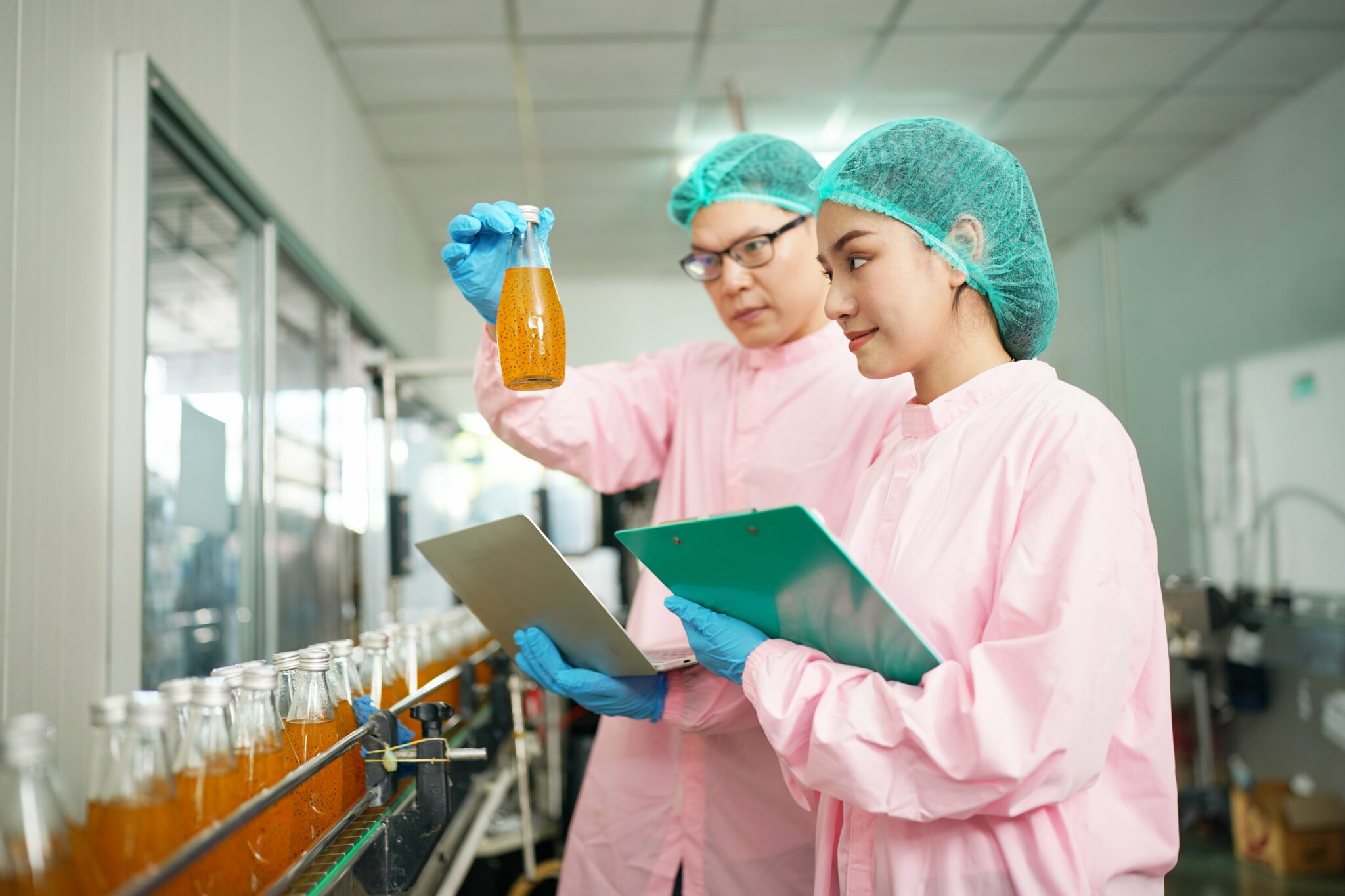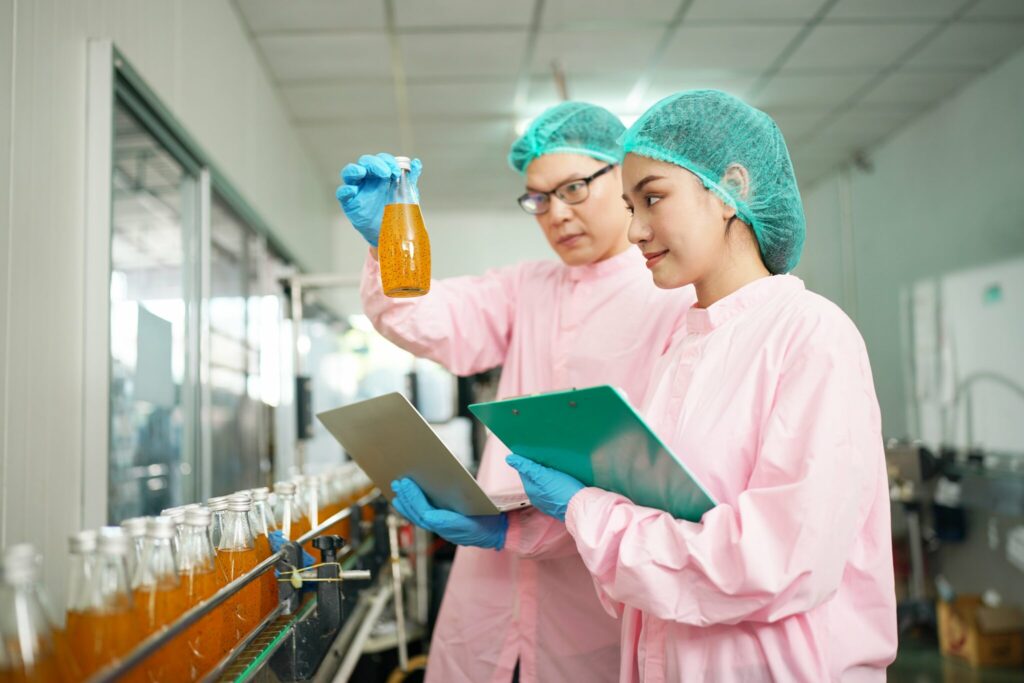
-
2025-03-13
- 0 Comment
Production hygiene in fruit and vegetable processing plants
Protecting the health of the consumer is crucial when marketing food products. They must be safe and pose no risk of causing damage to health, while of course meeting other requirements, such as composition, quality, sensory characteristics, which are imposed by both normative requirements (HACCP, GHP, GMP) and customer expectations.
Adherence to hygiene principles is necessary at every stage of production, from primary, through technological processes to distribution. In the case of fruit and vegetable processing, these principles, as well as the ways of complying with them, are particularly wide-ranging, as it is an industry comprising activities that often differ greatly from one another, although they also have common features.

Characteristics of fruit and vegetable processing
Fruit and vegetable processing aims to process and preserve agricultural crops so that they can be consumed throughout the year. The processing of the raw material can result in products such as:
- juices and nectars,
- frozen foods,
- beverages,
- concentrated juices,
- pickles,
- concentrates,
- pickled and fermented products,
- sweetened fruit preparations – curdled (e.g. jams, marmalades),
- preserved vegetables and fruit,
- semi-finished products (e.g. pulp, must),
- alcoholic beverages (e.g. fruit wines, meads).
The production structure, which accounts for about 10% of the sales value of the food industry, is dominated by juices (about 40%) and frozen food (about 30%). The characteristics of fruit and vegetable processing determine both the production processes and, consequently, influence the procedures related to the maintenance of production safety and hygiene.
Download the CleanAccess product catalogue and see how they can help keep food production facilities clean.
The range of final products is very wide, and smaller processing plants tend to specialise in one or possibly a few areas, such as the production of frozen foods, juices or jams. Regardless of the final product, however, the same assumptions face each processing plant. The raw material comes in many species and varieties, is rather perishable, seasonal and requires final or pre-processing in a short period of time.
Usually, the first step after receiving the raw material and confirming its compliance with standards is sorting, cleaning, picking, de-stalking and stoning. The next process steps depend on the final product. These can include, for example, frozen or sulphited pulp, allowing longer storage of the semi-finished product, pulping and puréeing, crushing and pressing, blanching, pasteurisation, marinating, freezing and others.
Hygiene and Safety in Fruit and Vegetable Processing
Hygiene and safety in production are influenced by many factors, ranging from technical conditions, the state of facilities and the plant, and the hygiene of employees, to the tools, accessories, and cleaning agents used in fruit and vegetable processing, as well as procedures. Most physical contaminants are eliminated during the cleaning, washing, and sorting stages. Chemical contaminants, particularly environmental ones, are constantly monitored through laboratory analysis, as well as microbiological hazards, including mycotoxins. What solutions can be implemented at the plant or workstation to increase production safety and hygiene in fruit and vegetable processing?
One important solution is the use of Centralized Cleaning Systems, which allow for the cleaning and disinfection of production lines, walls, floors, and equipment. The use of disinfectants suitable for food contact ensures a clean and hygienic work environment. Low-pressure cleaning systems, which use water from the network, also deserve attention. These can be used both during the product intake stage (washing and sorting) and on production lines.
CleanAccess offers cleaning systems featuring durable hoses for cold, warm, and detergent-based water cleaning. These hoses are color-coded, allowing them to be assigned to specific tasks or applications, just like the lances and nozzles used with them. Low-pressure nozzles, typically used for rinsing fruits and vegetables, allow for smooth flow regulation, adjusting the force and dispersion of the stream according to the type of raw material. It is also important to consider drain grates, specifically designed for the food industry. These are places where physical contaminants often accumulate, and microbiological growth can occur. Detachable stainless steel grates are easy to clean and disinfect thoroughly and quickly. Dedicated tool kits on mobile shadow boards can be very helpful in this process.
Stainless steel accessories are particularly useful in bread and pastry production, as they facilitate cleanliness and are durable.
The initial stage of production (as well as subsequent stages) involves the use of transport containers. These are made of food-safe material (food-grade polyethylene) and come in various sizes (from 18 to over 400 liters), which can be adapted to the specifics of a given process. Additionally, they can be used in freezing applications, as the material withstands temperatures ranging from -30°C to 80°C. The convenience of use is enhanced by their stackability and easy cleaning, while the hygiene of the production process in fruit and vegetable processing can be further improved through color coding of the containers.
Due to the nature of the raw material and the production processes, manual tools such as shovels, forks, scoops, and sieves are widely used. These tools are useful during raw material intake, sorting, and directly on the production lines. It is also recommended to use color coding to assign tools to specific tasks or workstations. Using shadow boards for storing tools and accessories also yields good results.
In this industry, large amounts of water, sticky syrups, and condensates are common. To remove these, rubber squeegees approved for food contact are very effective. These can be used to clean and remove dirt and liquids from walls, floors, production lines, machines, and equipment. Squeegees for condensates with a collection tank—especially those with telescoping handles and flow-through—are particularly useful, as they direct liquids into the tank, preventing them from spilling onto lower workstations or processing areas.
Fruit and vegetable processing is largely a manual process. Therefore, it’s essential not to overlook safe and hygienic equipment for workers. Sleeves, gloves, bands, and hairnets protect the product from physical and microbiological contamination. At the same time, they are detectable by X-Ray detectors, increasing the safety of the final product. For maximum comfort during the cleanhing of raw materials or facilities, workers can be equipped with waterproof clothing.
